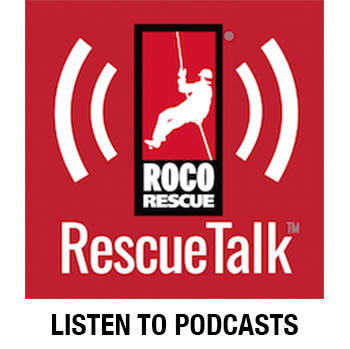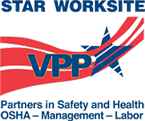When it comes to emergency response, the difference between a successful rescue and a tragedy often comes down to preparation and the resilience of your systems under stress. Whether it’s a confined space incident, a high angle rescue, or a hazardous materials incident having the right strategies in place is critical. Here are five key ways to make your industrial rescue team more effective.
 Have a Plan
Have a Plan
Every worksite has its own unique hazards, and your rescue plan needs to reflect that. Identify potential threats, map out response procedures, and make sure everyone knows their role. Regularly review and update your plan as equipment, personnel, and environments change. If your team isn’t ready before an emergency, they won’t be ready when it happens. The worst time to figure out if your plan will work is during an emergency
"The worst time to figure out if your plan will work is during an emergency"
 Continuous Training
Continuous Training
There’s no substitute for hands-on training. A rescue team that only talks about emergencies won’t perform well when the real thing hits. High pressure situations demand specialized skills—rope access, patient packaging, confined space extraction, hazmat response, and more. Training should be realistic, scenario-driven, and conducted under the same pressures your team will face in an actual rescue. If your training doesn’t push limits, you’re setting up for failure.
"There’s no substitute for hands-on training"
Full Speed Drills
A good plan and solid training mean nothing if they’re not reinforced through repetition. Regular drills are critical to sharpening skills and exposing weak points before they become life-threatening failures. Walk-throughs are useful, but full-scale simulations with time pressure, environmental stressors, and live casualties (even if they’re just well-coached role players) will tell you exactly where you stand. If it doesn’t work in a drill, it won’t work in the field.
 Multiple Forms of Communication
Multiple Forms of Communication
Industrial rescues are dynamic, chaotic, and unforgiving. In the heat of an operation, communication can be the difference between success and disaster. Establish clear, consistent communication protocols before an emergency occurs. Practice using radios, hand signals, and direct verbal commands so that when the pressure is on, there’s no hesitation or confusion. If your team can’t communicate effectively under stress, it’s only a matter of time before that failure costs lives.
"If your team can’t communicate effectively under stress, it’s only a matter of time before that failure costs lives."
 Gear
Gear
Your equipment is only as effective as the person using it. Regular maintenance and inspection ensure gear is operational when needed, but familiarity with its use is just as crucial. Every rescuer should know their tools so well that grabbing the right piece of gear becomes instinctive. Whether it’s an air monitor, a rope system, a mechanical advantage setup, or a patient immobilization device, your team must be able to deploy equipment efficiently and troubleshoot it under pressure. In a rescue, every second matters.
Industrial rescue is about preparation, execution, and constant improvement. The teams that get the job done are They're the ones that plan, know their gear, drill, communicate, and train relentlessly. If you want to be effective, these are five areas to focus on with your program. At the end of the day, when the call comes in, you won’t have time to get ready. You’ll either be ready, or you won’t.


.jpg?width=282&height=640&name=IMG_5201%20(1).jpg) Chief Bob Kauer, Chief Kenny Greene, Chief Bill Stio
Chief Bob Kauer, Chief Kenny Greene, Chief Bill Stio In the Early morning of January 18th NY’s CSRT Manager Bob Kauer along with CSRT Chief’s Kenny Greene and Bill Stio prepared to make the entry for the inspections and installation of crack gauges. The crew planned for the entry at one hour before mean low tide on the river. This was necessary due to the fact that the water level in the tunnel was approximately 3’ deep at low tide. The work period was calculated and determined to give us approximately one to one-half hour of entry time before the water level was too deep to safely work. Equipment was assembled and entrants donned their protective suits and prepared for entry. With the manhole cover removed and atmosphere cleared for entry the job began, with a CSRT member lowered in the space before the contractors. Once the water level was confirmed the contractors were lowered the 25’ into the space to start their inspections. They made their way upstream of the entry point conducting a visual inspection while the rescuer maintained visual and audible communication with them. The work continued downstream of the entry point first with visual inspection and then once identified the installation of the crack gauges.
In the Early morning of January 18th NY’s CSRT Manager Bob Kauer along with CSRT Chief’s Kenny Greene and Bill Stio prepared to make the entry for the inspections and installation of crack gauges. The crew planned for the entry at one hour before mean low tide on the river. This was necessary due to the fact that the water level in the tunnel was approximately 3’ deep at low tide. The work period was calculated and determined to give us approximately one to one-half hour of entry time before the water level was too deep to safely work. Equipment was assembled and entrants donned their protective suits and prepared for entry. With the manhole cover removed and atmosphere cleared for entry the job began, with a CSRT member lowered in the space before the contractors. Once the water level was confirmed the contractors were lowered the 25’ into the space to start their inspections. They made their way upstream of the entry point conducting a visual inspection while the rescuer maintained visual and audible communication with them. The work continued downstream of the entry point first with visual inspection and then once identified the installation of the crack gauges. Once the tide passed slack and started to rise the entrants took note that both the water level was quickly rising and the temperature was falling. They were able to complete the inspection and installation of the equipment along with the necessary measurements. The decision was made that the water level was rapidly rising to safely remain inside the tunnel. All entrants made the 300’ trek back to the entry point to be hauled back to the surface by the topside crew. All entrants were removed from the space and entry point closed after an hour and a half assignment.
Once the tide passed slack and started to rise the entrants took note that both the water level was quickly rising and the temperature was falling. They were able to complete the inspection and installation of the equipment along with the necessary measurements. The decision was made that the water level was rapidly rising to safely remain inside the tunnel. All entrants made the 300’ trek back to the entry point to be hauled back to the surface by the topside crew. All entrants were removed from the space and entry point closed after an hour and a half assignment. Downtown Albuquerque, New Mexico, is undergoing a facelift. Revitalization of older buildings is seen everywhere. In late 2024, First Responders waded into the middle of this revitalization to intervene in the emotional breakdown of a man. While that itself is not uncommon in Albuquerque or any other large city, the fact that it was 100 feet off the ground on a less-than-stable scaffolding made it a challenging and unique response for Albuquerque Fire Rescue (AFR).
Downtown Albuquerque, New Mexico, is undergoing a facelift. Revitalization of older buildings is seen everywhere. In late 2024, First Responders waded into the middle of this revitalization to intervene in the emotional breakdown of a man. While that itself is not uncommon in Albuquerque or any other large city, the fact that it was 100 feet off the ground on a less-than-stable scaffolding made it a challenging and unique response for Albuquerque Fire Rescue (AFR). Squad 2 is AFR’s technical rescue rig. This night it was commanded by Captain Dominic Velasquez, who is also a Roco Rescue Chief Instructor. Squad 2 arrived to find Battalion Chief 1 (Emily Kane) and Ladder 1 had already flown their stick and the pipeman (firefighter) who had climbed the ladder had located a man lying unconscious 100 feet up on the scaffold.
Squad 2 is AFR’s technical rescue rig. This night it was commanded by Captain Dominic Velasquez, who is also a Roco Rescue Chief Instructor. Squad 2 arrived to find Battalion Chief 1 (Emily Kane) and Ladder 1 had already flown their stick and the pipeman (firefighter) who had climbed the ladder had located a man lying unconscious 100 feet up on the scaffold. AFR Tech Rescue member and Lieutenant Kevin Kenney (also a Roco Instructor) ran the bottom plan of the rescue, while Captain Velasquez worked the plan up top. A pre-rigged stokes basket was hoisted to the scaffolding deck. Personnel rigged a traditional mainline using a Petzl Maestro and anchored a Petzl ASAP to provide a belay system. There were powerlines obstructing the preferred travel path for a horizontal Stokes basket, so Captain Velasquez made the call to package the patient vertically and performed a low-point vertical lower from the end of the scaffolding.
AFR Tech Rescue member and Lieutenant Kevin Kenney (also a Roco Instructor) ran the bottom plan of the rescue, while Captain Velasquez worked the plan up top. A pre-rigged stokes basket was hoisted to the scaffolding deck. Personnel rigged a traditional mainline using a Petzl Maestro and anchored a Petzl ASAP to provide a belay system. There were powerlines obstructing the preferred travel path for a horizontal Stokes basket, so Captain Velasquez made the call to package the patient vertically and performed a low-point vertical lower from the end of the scaffolding.
 For one example, offshore rescue personnel must operate in isolation – like on an island to themselves! These platforms can literally be located hundreds of miles offshore. Unlike on land, where backup professional responders and medical personnel can often arrive within an hour, offshore responders are the sole line of defense. Day and night shift personnel may support each other in emergencies – even though “rescue” is not their only job on the rig. However, the absence of immediate external backup places all responsibility on the onsite team.
For one example, offshore rescue personnel must operate in isolation – like on an island to themselves! These platforms can literally be located hundreds of miles offshore. Unlike on land, where backup professional responders and medical personnel can often arrive within an hour, offshore responders are the sole line of defense. Day and night shift personnel may support each other in emergencies – even though “rescue” is not their only job on the rig. However, the absence of immediate external backup places all responsibility on the onsite team. Getting Patients to Definitive Care
Getting Patients to Definitive Care-1.jpg?width=436&height=291&name=shutterstock_561615160%20(1)-1.jpg) No blind lifts: Operators must maintain clear visibility at all times.
No blind lifts: Operators must maintain clear visibility at all times. Whether in-house practice drills or working with a third-party trainer, training time is precious. Make sure yours is productive! Here are a few suggestions for getting the most from your training sessions. As always, be sure to document rescue training or practice time for each team member.
Whether in-house practice drills or working with a third-party trainer, training time is precious. Make sure yours is productive! Here are a few suggestions for getting the most from your training sessions. As always, be sure to document rescue training or practice time for each team member. Location
Location Team Leader
Team Leader 


